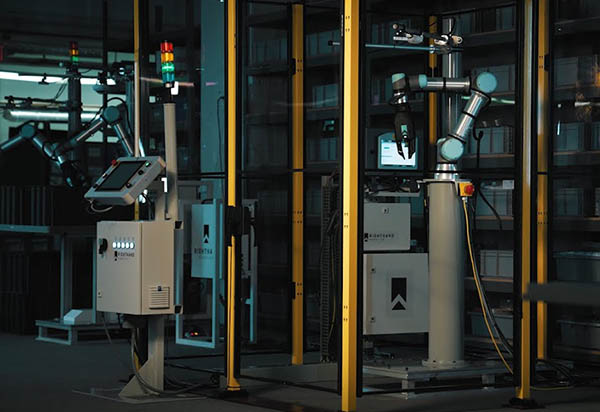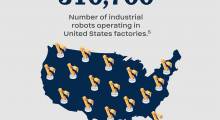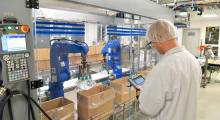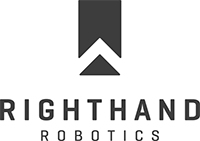In 2020, Thomas H. Lee Partners L.P. raised $900 million for its THL Automation Fund.
Since then, the Boston-based company has helped automated storage provider AutoStore go public, acquired the Semiconductor Solutions Group of Brooks Automation for $3 billion, and invested in freight-tracking software firm FourKites.
In February 2022, THL participated in robotic picking provider RightHand Robotics' Series C round. In April, the private equity (PE) firm oversaw the merger of MHS Global and Fortna to create an e-commerce and logistics services leader.
THL expects automation to transform industries
Mike Kaczmarek, managing director at THL, spoke with Robotics 24/7 about his outlook for robotics.
“We invest in healthcare, financial, technology and services, and broader technology businesses,” he said. “We've spent close to a decade as one of the larger PE firms interested in automation. We've invested approximately $5.5 billion in the robotics sector and across 20 businesses touching a range of end markets.”
“Our thesis is that automation is a global force that will transform industries over the next 30 to 50 years,” said Kaczmarek. “Robotics and automation could represent up to half of global GDP [gross domestic product] growth. It could have an impact similar to that of the Industrial Revolution.”
Several long-term trends are driving interest in robotics, noted Kaczmarek. The first is demographics—populations around the world are aging, leading to worker shortages that were already growing before the COVID-19 pandemic, he said.
“Second are ROI [return on investment] and the savings that companies see,” Kaczmarek added. “Automation can reduce costs, lower error rates, and maintain higher uptimes in less than a year, which is attractive payback.”
Third are environmental, societal, and governance (ESG) factors, as governments and companies in Europe and worldwide set sustainability goals.
“ESG continues to be an important trend,” said Kaczmarek. “Robots can reduce waste, particularly on the transport side. An AutoStore robot consumes less electricity than a vacuum cleaner, for example.”
“Lastly, automation can help fuel revenue growth, which is often not what people think of first,” he said. “Companies that automate could be six times more likely to generate greater than 15% growth than those that don't.”
Robotics to ride out 'headwinds'
Robotics 24/7 has tracked more than $19.2 billion in robotics-related transactions so far this year. Even though the International Federation of Robotics (IFR) and the Association for Advancing Automation (A3) continue to report record robotics industry growth, there are significant challenges.
The COVID-19 pandemic and its aftermath have altered consumer habits, and trade disputes and worker shortages have disrupted global supply chains. In addition, the conflict in Ukraine has affected food and energy markets, while concerns about inflation and recession have sparked debates in Silicon Valley, Wall Street, and Washington, D.C.
Technology companies have not been immune to layoffs and shutdowns, and about 75% of North American warehouses have yet to add robotics.
Still, Kaczmarek is bullish about automation.
“The growth has been strong in many categories on a percentage basis,” he explained. “Five years ago, the amount of warehouses that were automated was less than 10%, and today, it's approximately 15%. It's exciting how much more we have to go, and it could get to 60% to 70%.”
“The macro environment, in some senses, is unprecedented—low unemployment rates, attractive home-price appreciation, but with high inflation and rising interest rates,” he acknowledged. “We haven't seen this in the past 30 to 40 years. Despite massive labor shortages and supply chain constraints, consumers are still spending money, causing demand challenges across the supply chain.”
“Given market conditions, we're being cautious in the short term,” Kaczmarek said. “There could be pullback in certain areas, but long-term growth is still very attractive. For example, the ASRS [automated storage and retrieval systems] market could have a 15% CAGR [compound annual growth rate].”
“Current penetration rates are single-digit, but all industries—even arts and entertainment, real estate, utilities, and mining—could see double-digit adoption,” he noted.
Technologies to watch
THL sees promise across the robotics space and enabling technologies, said Kaczmarek. He cited the following categories:
- Physical automation—robotics
- Process automation—software, artificial intelligence, and machine learning
- Hybrid—“Where mechanical meets software, the Internet of Things [IoT], and orchestration.”
“We think all of these segments are exciting,” Kaczmarek said. “Within robotics, we're looking at collaborative robots, end effectors, ASRS, and mobile robots.”
“We believe these segments will continue to demonstrate strong growth characteristics,” he added.
RaaS could help SMEs automate
Can the robotics-as-a-service (RaaS) model help with adoption? “Over time, we'll see more, but it's still early days,” Kaczmarek replied. “We've surveyed customers, who generally still want to make an upfront purchase of automation technologies.”
“It's analogous to the software market, where there were on-premise licenses in the late 1980s and early '90s,” he continued. “That's where robotics is today. For a small maintenance fee, software moved to software as a service. It could start with smaller customers.”
Speaking of smaller companies, most small and midsize enterprises (SMEs) are just getting started with automation.
“We're seeing adoption, but midsize and larger enterprises have led the way,” said Kaczmarek.
About the Author
Follow Robotics 24/7 on Linkedin
Article topics
Email Sign Up


















